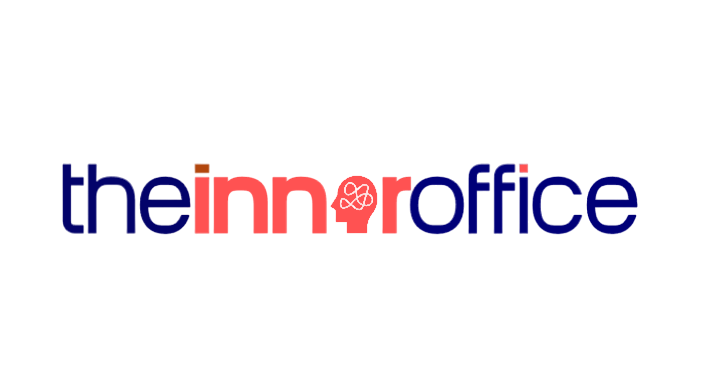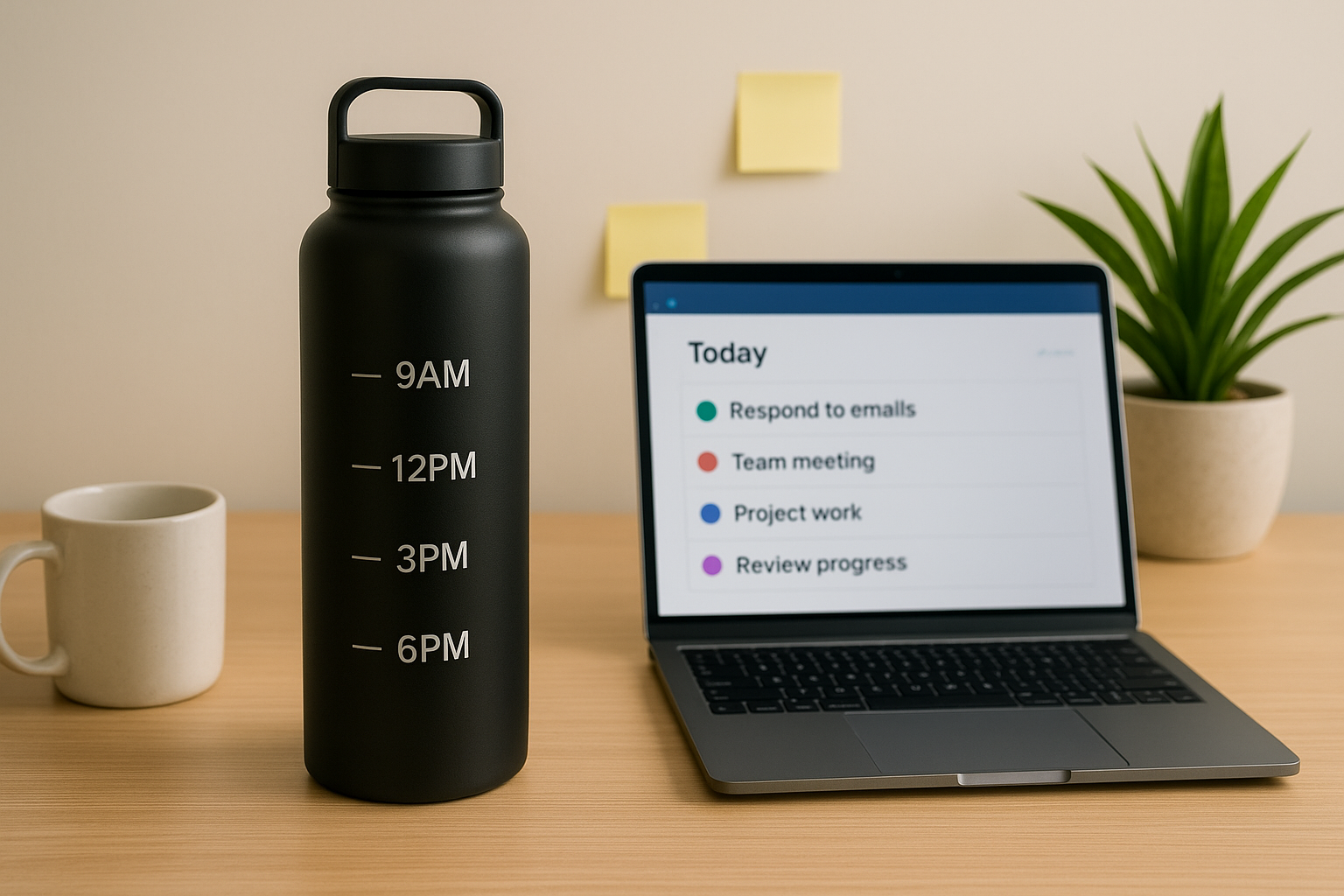The $11 Coffee vs. The Forgotten Water Bottle
Walk into any office building in Nairobi at 10 AM and count the coffee cups. Java House, Artcaffe, that local spot everyone loves—we’re a nation of coffee lovers. There’s a certain professional ritual to it: the morning meeting with a cappuccino, the afternoon slump fixed with an espresso, the informal networking over lattes.
Now count the water bottles. More specifically, count the water bottles that are actually being used, not just sitting on desks as expensive decorative pieces.
Here’s what you’ll likely find: professionals who spent 500 shillings on morning coffee but haven’t finished half a liter of water by lunch. And here’s the kicker—that hydration gap might be costing them more than money. It could be costing them their competitive edge.
The Dehydration Delusion
Let me share something that might make you uncomfortable: you’re probably dehydrated right now.
Not desert-level, crisis dehydration. But the subtle, insidious kind that corporate professionals live with daily—a chronic state of mild dehydration that we’ve normalized as just “how we feel at work.”
Margaret, a corporate lawyer in Nairobi, thought her afternoon brain fog was just part of being busy. The headaches? Stress. The difficulty concentrating during late afternoon meetings? Normal fatigue. The irritability when reviewing contracts? Just the pressure of the job.
Then she participated in a wellness challenge that required tracking her water intake. The results shocked her: most days, she was drinking less than three glasses of water. Her beverage consumption was almost entirely coffee and the occasional soda. She was essentially running a high-performance brain on a liquid deficit.
When she made a simple change—deliberately drinking eight glasses of water daily—the “normal” symptoms she’d accepted for years started disappearing. The brain fog lifted. The headaches reduced. Her focus in afternoon meetings sharpened noticeably.
Margaret’s colleagues started asking what had changed. Was she on a new diet? Getting more sleep? Taking supplements?
The answer was embarrassingly simple: water.
The Science of Professional Dehydration
Let’s talk about what’s actually happening in your body when you’re dehydrated—because understanding the mechanism makes the solution more compelling than just being told “drink more water.”
Your Brain is Mostly Water
Your brain is approximately 73% water. It’s also the most metabolically active organ in your body, consuming about 20% of your total energy despite being only 2% of your body weight. All that activity generates heat and metabolic waste that needs to be cleared.
When you’re even mildly dehydrated—just 1-2% below optimal hydration—several things happen:
- Cognitive Performance Drops: Research published in the Journal of Nutrition shows that mild dehydration impairs cognitive performance, particularly executive functions like planning, problem-solving, and working memory. These aren’t nice-to-have skills—they’re exactly what you’re being paid for.
- Mood Deteriorates: A study from the University of Connecticut found that even mild dehydration significantly impacts mood, causing increased perception of task difficulty, lower concentration, and increased anxiety. That irritability you feel in meetings? It might not be your difficult colleague—it might be dehydration.
- Physical Performance Suffers: While you’re not running marathons in the office, you are sitting, standing, walking between meetings, and maintaining posture. Dehydration affects all of it, contributing to fatigue and that “heavy” feeling by mid-afternoon.
The Coffee Contradiction
Here’s where it gets interesting for coffee-loving professionals: caffeine is a mild diuretic, meaning it increases urine production. While moderate coffee consumption doesn’t cause net dehydration (your body adapts), relying solely on coffee for fluid intake means you’re missing out on the benefits of proper hydration.
Moreover, caffeine masks fatigue without addressing the underlying issues. It’s like putting a piece of tape over your car’s check engine light—the warning goes away, but the problem doesn’t.
The Kenyan Professional Context
Let’s address the specific challenges Kenyan professionals face with hydration:
The Infrastructure Reality
Not all office buildings have reliable, clean water sources. Some professionals are reluctant to drink water because bathroom breaks are inconvenient or facilities aren’t well-maintained. In traffic-heavy Nairobi, that morning commute might mean limiting water to avoid needing bathroom stops.
These are real concerns that generic wellness advice doesn’t address. The solution isn’t just “drink more water”—it’s creating a practical hydration strategy that works with your reality.
The Meeting Marathon Culture
Back-to-back meetings leave little time for water breaks. You grab coffee on the way to the next meeting because it’s quick and gives you a boost. Water gets deprioritized not because you don’t care, but because your schedule doesn’t seem to allow it.
The Perception Problem
There’s also a subtle professional image concern. Constantly drinking water means frequent bathroom breaks. Some professionals worry this makes them seem less focused or interrupts their workflow. (Ironically, dehydration actually reduces focus far more than a two-minute bathroom break.)
The Hidden Costs of Dehydration in Professional Settings
Let me break down what dehydration actually costs you in professional contexts:
Decision-Making Degradation
Peter, a financial analyst, reviews investment proposals and makes recommendations that affect millions. His decision-making quality directly impacts his firm’s returns. A study in Frontiers in Human Neuroscience found that dehydration impairs decision-making, particularly in complex, ambiguous situations—exactly the kind of decisions high-level professionals make daily.
By early afternoon, when Peter was typically most dehydrated, his analysis became less sharp. He missed details. His recommendations became more conservative because his brain, running on deficit, defaulted to the safest option rather than the optimal one.
Creative Problem-Solving Blockage
Linda, a marketing director, leads brainstorming sessions and develops campaign strategies. Her job requires creativity and innovative thinking. Research shows that dehydration specifically impairs divergent thinking—the ability to generate multiple solutions to a problem.
Those creative blocks Linda experienced? The times when ideas just wouldn’t flow? Often correlated with her hydration levels. On days when she intentionally stayed well-hydrated, her creative output noticeably improved.
Communication Breakdown
Dehydration affects vocal cord lubrication and clarity of speech. For professionals who spend their day in meetings, presentations, or phone calls, this matters. That slight rasp in your voice during afternoon presentations? The need to clear your throat repeatedly during important calls? Often hydration-related.
The Hydration Strategy for Busy Professionals
Knowing you should drink more water and actually doing it are different things. Here’s a practical strategy built for busy professionals:
Strategy 1: The Visible Commitment
Get a large, insulated water bottle (1-1.5 liters) and make it your constant companion. Not a small cup you refill ten times—one substantial bottle that’s always visible on your desk.
Why this works: Visibility creates accountability. When the bottle is right there, you’re reminded to drink. When it’s insulated, water stays cold and appealing. When it’s large, you don’t need constant refills that disrupt workflow.
Mark time goals on the bottle:
- 9 AM: Quarter full
- 12 PM: Half full
- 3 PM: Three-quarters full
- 6 PM: Complete
This turns hydration from a vague goal into a trackable outcome.
Strategy 2: Habit Stacking
Link hydration to existing routines:
- Drink a full glass before your morning coffee
- Have water during every meeting (bring your bottle)
- Drink water immediately after bathroom breaks
- Keep water on your desk, coffee in the kitchen (so you see water more often)
Strategy 3: The Flavor Fix
If plain water feels boring, make it interesting without adding sugar:
- Lemon or lime slices
- Cucumber and mint
- Ginger slices
- Herbal teas (count toward hydration)
Strategy 4: The Tracking Gamification
Use your phone to track water intake. Several apps make this simple and even enjoyable. The act of logging creates a moment of mindful awareness about hydration.
Alternatively, use rubber bands on your water bottle—move one band each time you finish and refill. Simple, visual, effective.
Strategy 5: The Temperature Technique
Many people drink more when water is very cold or warm (tea/hot water). Experiment with temperature. An insulated bottle keeps water at your preferred temperature for hours.
The 7-Day Hydration Challenge
Try this experiment for just seven days:
Days 1-3: Baseline Track your current water intake honestly. Note how you feel throughout the day: energy levels, focus, mood, physical sensations.
Days 4-7: Intentional Hydration Commit to 8-10 glasses (approximately 2-2.5 liters) daily. Track the same metrics.
What most professionals discover: the difference is remarkable. Headaches reduce. Energy stabilizes. That 4 PM crash becomes less severe. Mental clarity improves.
Real Results from Real Professionals
James, a software developer, was skeptical. “I’ll just have to pee all the time,” he complained. But during a company wellness challenge, he committed to trying proper hydration for two weeks.
The first three days were indeed marked by frequent bathroom trips as his body adjusted. But by day four, things normalized. His body adapted to consistent hydration rather than the feast-or-famine pattern he’d been living with.
The results? His code reviews showed fewer errors. His debugging became more efficient. His afternoon productivity—historically his worst time—improved noticeably. He realized his afternoon crash wasn’t inevitable; it was induced by dehydration.
Rose, an HR director, noticed improved emotional regulation. Difficult conversations with employees went smoother. She had more patience with persistent problems. Her team commented that she seemed “more herself” lately.
The only change? Hydration.
The Business Case for Hydration
Let’s talk ROI. If you’re a business leader or manager, here’s why you should care about your team’s hydration:
A University of East London study found that drinking water improved cognitive performance by 14%. Imagine your entire team operating at 14% higher cognitive capacity. No training program, no expensive software—just water.
For an individual professional earning 150,000 shillings monthly, if improved hydration boosts productivity by even 10%, that’s equivalent to gaining 15,000 shillings worth of additional productive output. The cost? Essentially nothing.
Overcoming the Practical Barriers
“I forget to drink water” Solution: Set phone reminders. Use apps. Make it visible.
“I don’t like the taste” Solution: Try filtered water. Add natural flavors. Try different temperatures.
“Bathroom breaks disrupt my work” Solution: Schedule water intake to align with natural breaks. Reduce intake an hour before important meetings if needed. (Your body will adjust within days.)
“Water isn’t exciting like coffee” Solution: It’s not supposed to be. Coffee is pleasure. Water is fuel. You need both, for different reasons.
The Compound Effect
Here’s what makes hydration such a powerful intervention: it’s not just about direct effects. Proper hydration enables everything else.
When you’re well-hydrated:
- Exercise feels easier (making you more likely to move)
- Sleep quality improves (you’re less likely to wake from thirst)
- Food digestion optimizes (improving nutrient absorption)
- Stress resilience increases (your body handles pressure better)
It’s a foundational habit that amplifies all other wellness efforts.
Your Next Step
Here’s your challenge: For the next seven days, commit to proper hydration. Get a quality water bottle. Set it up with time markers. Track your intake and your experience.
Notice what changes. Pay attention to:
- Energy levels throughout the day
- Mental clarity during complex tasks
- Mood and patience in challenging situations
- Physical feelings (headaches, back pain, fatigue)
After seven days, decide if the benefits are worth the minimal effort.
The Investment
A good water bottle: 1,000-2,000 KSh Time required daily: Essentially zero (you’re just being intentional about something you already do) Potential impact: Significant improvement in cognitive performance, mood, and energy
That might be the highest ROI wellness investment you’ll ever make.
The Bottom Line
Your career success depends on your brain performing at its best. Your brain requires hydration to function optimally. The solution is simple, essentially free, and doesn’t require any special equipment or training.
The question isn’t whether hydration matters—the science is clear. The question is whether you’ll prioritize something so simple that it seems too easy to be important.
In a world of complex productivity hacks and expensive optimization tools, sometimes the most powerful strategy is embarrassingly simple: drink more water.
Your breakthrough might not be in the next course, the next app, or the next productivity system. It might be hiding in plain sight, in that water bottle you keep forgetting to use.



